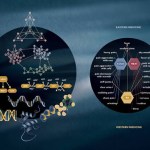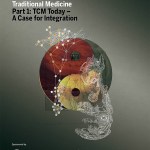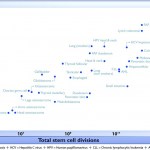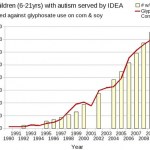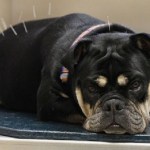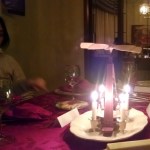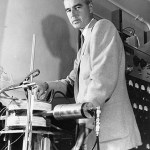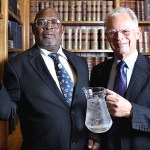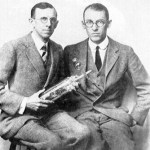Science
The holidays must truly be over. I say this because, starting around Sunday, the drumbeat of blogging topics that I haven't covered but that apparently you, my readers, want me to cover has accelerated. However, before I can move on to what might or might not be greener blogging pastures, material-wise, I feel obligated to finish what I started yesterday, namely the deconstruction of an advertising supplement promoting the "integration" of "traditional medicine" (in particular, traditional Chinese medicine, a.k.a. TCM) for which Science and the American Association for the Advancement of…
Over on Facebook, my colleague Chris Chabris was talking up a smartphone game from a company he's associated with. Which of course got me thinking "Wait, why don't I have a smartphone game company?" (The Renaissance Weekend is also partly to blame, as I was one of about six people there who didn't have a start-up company of some sort...) Which, in turn, led to the realization that there really ought to be a quantum optics video game. Or maybe a series of games, because you could construct a whole bunch of puzzlers around quantum phenomena:
-- The most basic would be to do something like the…
"Hey," you say, "It's been, like, a week and a half since you did a post flogging Eureka: Discovering Your Inner Scientist. What gives?" Well, I've been kind of busy, and also the media world sort of goes into suspended animation over the stretch between Christmas and New Year's.
However, there's publicity stuff in the works. Specifically, the interview I recorded with Joe Donahue for The Roundtable on WAMC will probably air today. I'm not sure exactly when-- the show runs from 9am to noon, but I would bet on some time between 10:20 and 11:45, because I'm teaching a class then.
Anyway, it's…
NOTE: There is a follow up to this post.
The holidays are over. Time to start dishing out fresh Insolence, Respectful and, as appropriate, not-so-Respectful for 2015.
I do, however, feel obligated to deal with one painfully inappropriate action by a major science journal left over from 2014. It happened in an issue that came out just before Christmas, and, with all the festivities, being on call last week, and having houseguests; so, unfortunately, I just didn't get around to addressing it, either here or on my not-so-super-secret other blog (where I might crosspost this later in the week).…
If there is one cause of cancer, it would be genetic damage to somatic cells. So all we have to do to cure cancer is prevent all genetic damage! That's not a very useful prescription, unfortunately; it's rather like saying that all we have to do to prevent accidental deaths is prohibit all potential causes of injury. The causes of genetic damage are ubiquitous.
We're familiar with some. Smoking, for instance, irritates and damages the cells of the lung epithelium, and increases the rate of cancer incidence. UV radiation damages DNA, so prolonged exposure to the sun increases the rate of skin…
As mentioned briefly here and on Twitter, I spent the past week at the Renaissance Weekend in Charleston, SC. This is a biggish smart-people festival, running for 30-odd years now, bringing together a wide array of people from politics, finance, science, and the arts. Bill Phillips has been going to it for years (though he wasn't there this year), so when I got the invitation, I jumped at it.
Unfortunately for blog purposes, they have a strict policy about everything said there being off the record, so I can't post really detailed stories about anything, but it was a very cool experience. And…
Seven years ago I returned to Michigan, where I was born and spent the first quarter century of my life, after an absence of more than 20 years. In the interim, I had done my surgical residency and earned my PhD in Cleveland, a surgical oncology fellowship in Chicago, and worked in New Jersey at my first academic job for eight and a half years. Then I was lured back with a job in Detroit. One of the odd things about this return after such a long absence was the culture shock, how much I had forgotten about the Detroit area. One of those things that I had forgotten is just how crazy about…
She's baa-aack.
Remember Stephanie Seneff? When last Orac discussed her, she had been caught dumpster diving into the VAERS database in order to torture the data to make it confess a "link" between aluminum adjuvants in vaccines and acetaminophen and—you guessed it!—autism. It was a bad paper in a bad journal known as Entropy that I deconstructed in detail around two years ago. As I said at the time, I hadn't seen a "review" article that long and that badly done since the even more horrible article by Helen Ratajczak entitled Theoretical aspects of autism: Causes–A review (which, not…
Ever since moving back to the Detroit area nearly seven years ago, one thing I've noticed is a propensity for our local news outlets to go full pseudoscience from time to time. I'm not sure why, other than perhaps that it attracts eyeballs to the screen, but, in reality, most of these plunges into pseudoscience and quackery are so poorly done that I find it hard to believe that even believers find them interesting. For example, back in 2008, I discussed a particularly dumb story aired by our local NBC affiliate WDIV entitled Orbs: Myth or Real?, which, not having started my new job yet, I…
After I woke up this morning, the haze induced by feasting and hanging out with family only slowly clearing, I debated about whether I wanted to post anything at all today. After all, in much of the English-speaking world, it's still a holiday, Boxing Day. Although not an official holiday here in the US, when Christmas is on a Thursday, as it was this year, Boxing Day becomes an unofficial holiday that the majority of people not working in the retail sector seem to take off, the better to produce a four or five day weekend, depending upon whether they took Christmas Eve off as well. Also, it…
One of my Christmas gifts this year was a Seek Thermal camera, so I can continue my transformation into Rhett Allain. What's this for? Why, physics, of course. Such as this video of the operation of the Christmas pyramid my parents picked up in Germany, and had set up at the start of Christmas dinner:
Sadly, the Seek Thermal app doesn't seem to record audio with the video, so you miss out on SteelyKid's running commentary about the whole thing... But you can fairly clearly see the plumes of hot air rising up from the candle to push the vanes of the fan. There's probably a way to estimate the…
When I launched this back at the start of December, I honestly wasn't sure I would have enough good stories to make it through. I suspected I might end up going a week or two, then quietly letting the whole thing drop. As we come to the end, though, I've run out of days well before running out of stories. There's this one slot left, and a huge number of great stories I could relate-- Pauli proposing the neutrino as an act of desperation, or Cowan and Reines detecting it. The race to split the atom in the 1930's, won by Rutherford's Cavendish Lab. Julian Schwinger's odd work schedule. John…
For the penultimate advent calendar of science stories post, we'll turn to a great experimentalist with a great biography. This story also appears in Eureka: Discovering your Inner Scientist, but it's too good not to re-use.
Chien-Shiung Wu was born in china in 1912, at right around the time education of women was first legalized. Her father founded a school for girls so he could teach her, then at around the age of 10 she went off to a boarding school, and then the best universities in the country, where she distinguished herself as one of the finest math and physics students in China. At…
As Dean Kamen, inventor of such amazing technologies as the the Segway human transporter and one of the world's most advanced robotic arm prostheses, often says: "Our nation is enamored with sports and entertainment, but how can we groom kids to become as passionate about innovation?"
At the Festival's fascinating all-day X-STEM Symposium, presented by MedImmune next spring, you'll not only meet Dean but also a compendium of other renowned STEM visionaries to explore the passion and excitement of innovation!
Prepare to be amazed and inspired as X-STEM Extreme, set for Tuesday, April 28, 2015…
One of the very best books I ran across in the process of doing research for Eureka is The Second Creation: Makers of the Revolution in Twentieth-Century Physics by Robert P. Crease and Charles C. Mann. It's an extremely detailed treatment of the development of quantum theory, and includes anecdotes that I haven't seen elsewhere. It also does a fantastic job of showing the essential interplay of experiment and theory through the difficult process of developing quantum field theory, which is often underplayed in popular treatments (which tend to be written by theorists, and often treat…
Another weekend day, another story I'm going to outsource a bit. In this case, to the original scientist, who at the time of his discovery was a 13-year-old schoolboy in Tanzania:
In 1963, when I was in form 3 in Magamba Secondary School, Tanzania, I used to make ice-cream. The boys at the school do this by boiling milk, mixing it with sugar and putting it into the freezing chamber in the refrigerator, after it has first cooled nearly to room temperature. A lot of boys make it and there is a rush to get space in the refrigerator.
One day after buying milk from the local women, I started…
We're going to depart from the chronological ordering again, because it's the weekend and I have to do a bunch of stuff with the kids. Which means I'm in search of a story I can outsource...
In this case, I'm outsourcing to myself-- this is a genuine out-take from Eureka: Discovering Your Inner Scientist, specifically Chapter 2, which tells two stories from the career of Luis Alvarez, who I've talked about before in the context of his experiment to x-ray one of the pyramids at Giza, and the time I wrote him a letter when I was nine about his theory that an asteroid impact killed the dinosaurs…
As I endlessly repeat, I'm an experimentalist by training an inclination, so I especially appreciate stories about experimental science. There's something particularly wonderful about the moment when an experiment clicks together, usually after weeks or months of hard, frustrating work, when things just keep breaking.
Of course, sometimes, breaking stuff can be a Good Thing.
Possibly my favorite story from the development of quantum physics involves just such an occasion, around 1924, when Clinton Davisson and Lester Germer at Bell Labs were trying to characterize a nickel surface by bouncing…
Given that I am relentlessly flogging a book about the universality of the scientific process (Available wherever books are sold! They make excellent winter solstice holiday gifts!), I feel like I ought to try to say something about the latest kerfuffle about the scientific method. This takes the form of an editorial in Nature complaining that Richard Dawid and Sean Carroll among others are calling for discarding traditional ideas about how to test theories. Which is cast as an attempt to overthrow The Scientific Method.
Which, you know, on the one hand is a kind of impossible claim. There…
The winter solstice holidays are a time for family and togetherness, so building off yesterday's post about the great Marie Skłodowska Curie, we'll stay together with her family. Specifically her daughter Irène Joliot-Curie and her husband Frédéric. The Joliot-Curies are possible answers to a number of Nobel Prize trivia questions-- only mother and daughter to win, one of a handful of married couples, etc.-- but the scientific story about them that I find most fascinating is that their Nobel was for the third thing they did that could've earned them the prize, after they just missed out on…
